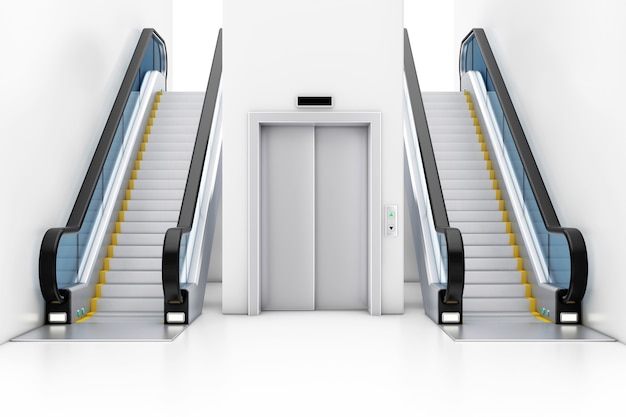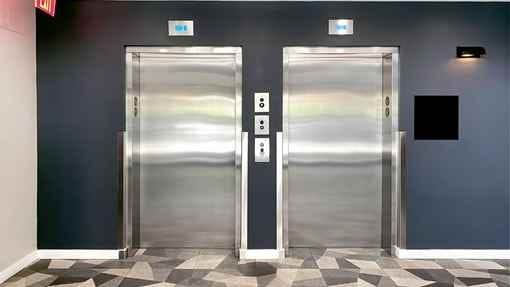We Maintain Lifts to the Greatest Specifications: Reliable Service for All Lift Types
Exploring the Globe of Elevators: Common Problems Encountered by Different Lift Systems
As we browse through the vertical transport systems of contemporary structures, elevators stand out as an important part of our day-to-day lives. From hydraulic elevators to traction systems and machine-room-less designs, each lift type comes with its set of typical concerns.
Hydraulic Lifts
Hydraulic lifts, often chosen for low-rise buildings, use fluid stress to manage the activity of the lift auto (lift repair companies). This mechanism involves a hydraulic pump pushing oil into a cylinder, causing the elevator to move in the desired direction. While hydraulic elevators are known for their smooth and quiet operation, they do come with their own set of usual concerns
One widespread issue with hydraulic lifts is oil leak. In addition, problems with the control system, such as damaged valves or a malfunctioning pump, can cause disturbances in the elevator's motion.
Normal upkeep and timely repair services are necessary to make sure the smooth performance of hydraulic elevators. By attending to these usual problems proactively, building proprietors can reduce downtime and make certain the safety and efficiency of their upright transportation system.
Grip Elevators
When thinking about vertical transport systems in structures, another typical type apart from hydraulic lifts is the traction elevator. Grip lifts operate utilizing a system of ropes and counterweights that relocate the elevator car by clutching onto the hoist ropes. This mechanism enables smoother and much faster upright transportation contrasted to hydraulic systems.
One of the common problems dealt with by traction lifts is rope wear. The continuous movement of the ropes within the grip system can result in tear and wear over time, possibly causing the elevator to malfunction or end up being hazardous for usage. Normal assessments and upkeep of the ropes are crucial to make sure the lift's correct functioning and safety.
Another concern that traction elevators might run into is connected to the control system. Issues with the control system can bring about problems such as unpredictable activity, delays in feedback times, or perhaps complete shutdowns. Normal screening and maintenance of the control system are vital to avoid such issues and guarantee the lift's dependability.
Machine-Room-Less (MRL) Elevators

Among the key elements of MRL lifts is the portable gearless traction machine that is installed within the hoistway. This equipment efficiently drives the elevator auto without the requirement for bulky devices located in typical traction elevators. Furthermore, MRL elevators normally utilize a weight system to balance the automobile, more boosting their energy performance.
In spite of their benefits, MRL lifts may face obstacles connected to upkeep and fixing due to the confined area for tools installation. Availability for servicing parts within the shaft can be limited, requiring specialized training for technicians. Appropriate upkeep schedules and normal assessments are crucial to make certain the ongoing smooth operation of MRL lifts.
Overloading and Weight Limit Issues
Are elevators outfitted to take care of excess weight loads effectively and safely? Overloading and weight limitation issues are crucial worries in elevator procedures. Lift makers design lifts with specific weight capabilities his explanation to guarantee passenger security and devices durability. Surpassing these weight limits can result in numerous problems, consisting of mechanical failures, delays, and security dangers.
When elevators are overwhelmed, it puts excessive pressure on the motor, cable televisions, and other elements, potentially triggering malfunctions or break downs. Security mechanisms such as sensing units and overload sensors remain in area to stop lifts from moving if they find excess weight. Additionally, going beyond weight restrictions can bring about raised power intake and deterioration on the elevator system.
To minimize straining issues, building supervisors need to plainly show weight restrictions in elevators and educate residents on the significance of sticking to these constraints - lift repair companies. Normal maintenance checks by qualified service technicians can also aid make certain that lifts are running within risk-free weight parameters. By dealing with overloading and weight limit concerns proactively, structure proprietors can improve lift safety and performance
Electrical System Failings
Going beyond weight limitations in lifts can not just result in mechanical problems yet likewise possibly add to electric system failures within the lift facilities. Electric system failings are an important concern in elevator procedure, as they can cause unforeseen shutdowns, malfunctions, and even security risks. One common electrical problem is the getting too hot of elements due to too much present circulation created by straining the elevator past its capacity. This can lead to harm to the control, circuitry, or electric motor systems, leading to expensive repair services and downtime.
In addition, power rises or variations in the electric supply can likewise interfere with the elevator's operation, influencing its performance and safety. These electrical disturbances can damage delicate lift components such as control board, motherboard, or sensors, causing system failings. Routine upkeep and assessments are important to recognize and attend to possible electric problems immediately, making sure the risk-free and reliable procedure of lift systems. By sticking to weight restrictions and performing routine electrical system checks, structure owners can minimize the risk of electrical failures in lifts.
Verdict

Hydraulic elevators, commonly chosen for low-rise structures, utilize fluid stress to regulate the movement of the lift vehicle.When taking into consideration vertical transportation systems in structures, another typical kind aside from hydraulic lifts is the grip elevator. Traction lifts run utilizing a system of ropes and weights that relocate the elevator cars and truck by gripping onto the hoist ropes. Unlike conventional lifts that call for a separate maker area to house the equipment, MRL elevators incorporate many of the parts within the shaft, eliminating the requirement for a dedicated device space.In verdict, elevators face typical problems such as hydraulic breakdowns, grip system failings, and electrical system problems.